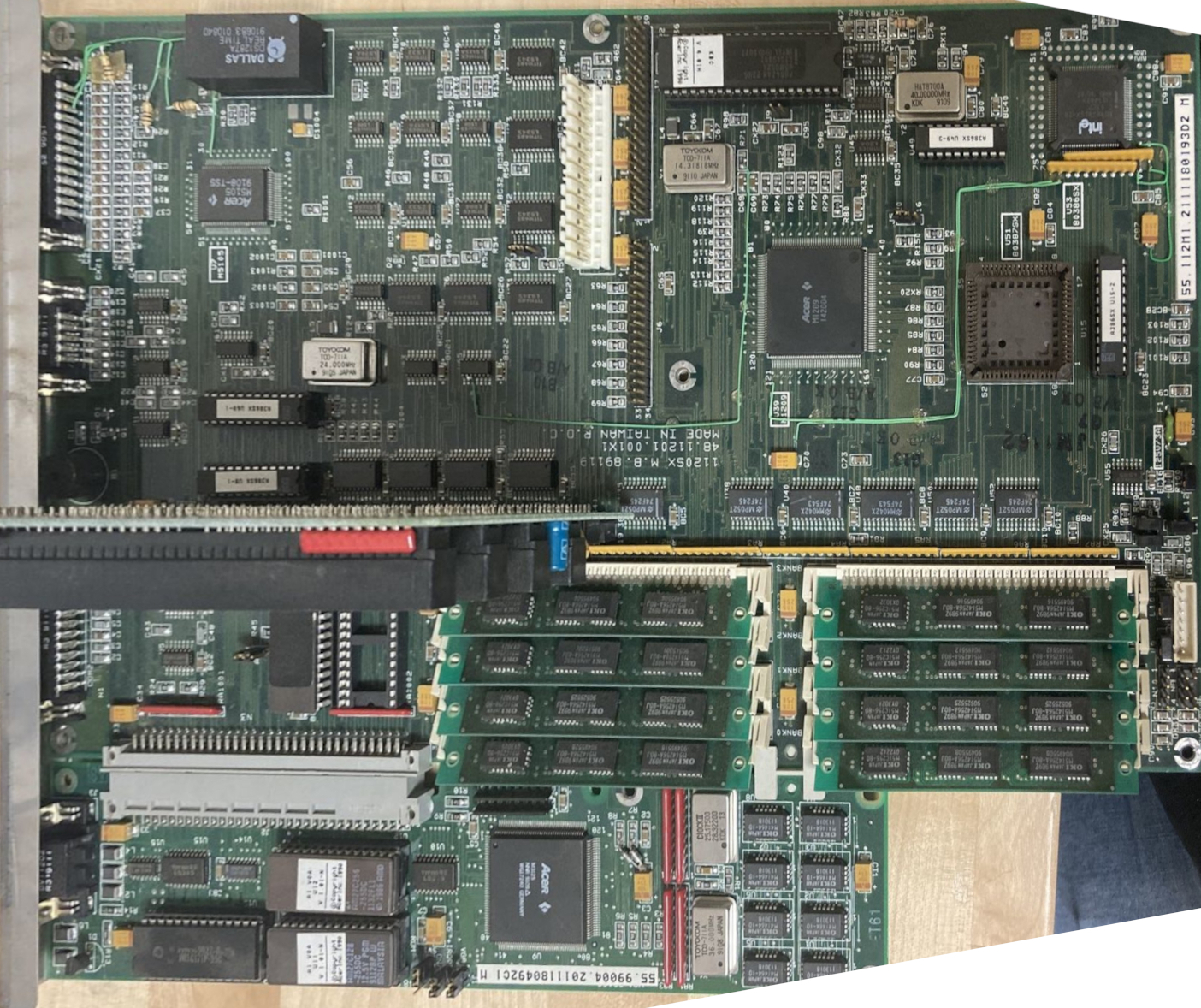Appreciate it! Here is the output from trymodes:
Setting mode 0... OK
Setting mode 1... OK
Setting mode 2... OK
Setting mode 3... OK
Setting mode 4... OK
Setting mode 5... OK
Setting mode 6... OK
Setting mode 7... OK
Setting mode 8... wrong, mode is 7
Setting mode 9... wrong, mode is 7
Setting mode 10... wrong, mode is 7
Setting mode 11... wrong, mode is 7
Setting mode 12... wrong, mode is 7
Setting mode 13... OK
Setting mode 14... OK
Setting mode 15... OK
Setting mode 16... OK
Setting mode 17... OK
Setting mode 18... OK
Setting mode 19... OK
Setting mode 20... wrong, mode is 19
Setting mode 21... wrong, mode is 19
Setting mode 22... wrong, mode is 19
Setting mode 23... wrong, mode is 19
Setting mode 24... OK
Setting mode 25... OK
Setting mode 26... wrong, mode is 25
Setting mode 27... wrong, mode is 25
Setting mode 28... wrong, mode is 25
Setting mode 29... wrong, mode is 25
Setting mode 30... wrong, mode is 25
Setting mode 31... wrong, mode is 25
Setting mode 32... wrong, mode is 25
Setting mode 33... OK
Setting mode 34... wrong, mode is 33
Setting mode 35... OK
Setting mode 36... OK
Setting mode 37... wrong, mode is 36
Setting mode 38... OK
Setting mode 39... wrong, mode is 38
Setting mode 40... OK
Setting mode 41... wrong, mode is 40
Setting mode 42... wrong, mode is 40
Setting mode 43... wrong, mode is 40
Setting mode 44... wrong, mode is 40
Setting mode 45... wrong, mode is 40
Setting mode 46... wrong, mode is 40
Setting mode 47... wrong, mode is 40
Setting mode 48... wrong, mode is 40
Setting mode 49... wrong, mode is 40
Setting mode 50... wrong, mode is 40
Setting mode 51... wrong, mode is 40
Setting mode 52... wrong, mode is 40
Setting mode 53... wrong, mode is 40
Setting mode 54... wrong, mode is 40
Setting mode 55... wrong, mode is 40
Setting mode 56... wrong, mode is 40
Setting mode 57... wrong, mode is 40
Setting mode 58... wrong, mode is 40
Setting mode 59... wrong, mode is 40
Setting mode 60... wrong, mode is 40
Setting mode 61... wrong, mode is 40
Setting mode 62... wrong, mode is 40
Setting mode 63... wrong, mode is 40
Setting mode 64... wrong, mode is 40
Setting mode 65... wrong, mode is 40
Setting mode 66... wrong, mode is 40
Setting mode 67... wrong, mode is 40
Setting mode 68... wrong, mode is 40
Setting mode 69... wrong, mode is 40
Setting mode 70... wrong, mode is 40
Setting mode 71... wrong, mode is 40
Setting mode 72... wrong, mode is 40
Setting mode 73... wrong, mode is 40
Setting mode 74... wrong, mode is 40
Setting mode 75... wrong, mode is 40
Setting mode 76... wrong, mode is 40
Setting mode 77... wrong, mode is 40
Setting mode 78... wrong, mode is 40
Setting mode 79... wrong, mode is 40
Setting mode 80... wrong, mode is 40
Setting mode 81... wrong, mode is 40
Setting mode 82... wrong, mode is 40
Setting mode 83... wrong, mode is 40
Setting mode 84... wrong, mode is 40
Setting mode 85... wrong, mode is 40
Setting mode 86... wrong, mode is 40
Setting mode 87... wrong, mode is 40
Setting mode 88... wrong, mode is 40
Setting mode 89... wrong, mode is 40
Setting mode 90... wrong, mode is 40
Setting mode 91... wrong, mode is 40
Setting mode 92... wrong, mode is 40
Setting mode 93... wrong, mode is 40
Setting mode 94... wrong, mode is 40
Setting mode 95... wrong, mode is 40
Setting mode 96... wrong, mode is 40
Setting mode 97... wrong, mode is 40
Setting mode 98... wrong, mode is 40
Setting mode 99... wrong, mode is 40
Setting mode 100... wrong, mode is 40
Setting mode 101... wrong, mode is 40
Setting mode 102... wrong, mode is 40
Setting mode 103... wrong, mode is 40
Setting mode 104... wrong, mode is 40
Setting mode 105... wrong, mode is 40
Setting mode 106... wrong, mode is 40
Setting mode 107... wrong, mode is 40
Setting mode 108... wrong, mode is 40
Setting mode 109... wrong, mode is 40
Setting mode 110... wrong, mode is 40
Setting mode 111... wrong, mode is 40
Setting mode 112... wrong, mode is 40
Setting mode 113... wrong, mode is 40
Setting mode 114... wrong, mode is 40
Setting mode 115... wrong, mode is 40
Setting mode 116... wrong, mode is 40
Setting mode 117... wrong, mode is 40
Setting mode 118... wrong, mode is 40
Setting mode 119... wrong, mode is 40
Setting mode 120... wrong, mode is 40
Setting mode 121... wrong, mode is 40
Setting mode 122... wrong, mode is 40
Setting mode 123... wrong, mode is 40
Setting mode 124... wrong, mode is 40
Setting mode 125... wrong, mode is 40
Setting mode 126... wrong, mode is 40
Setting mode 127... wrong, mode is 40
XP: A64 3000+ S754 / 2GB DDR / 500GB SATA / Audigy1
2K: AXP 1700+ @ 1.61 / 1GB DDR / 120GB IDE / X800XL / Audigy 2ZS
98SE: P3 500 / 512MB SDR / 120GB IDE / V3 3000 AGP / Vortex2
95: P200 MMX / 32MB SDR / 3.2GB IDE
DOS/3.11: Acer 1120SX, 386SX-20
